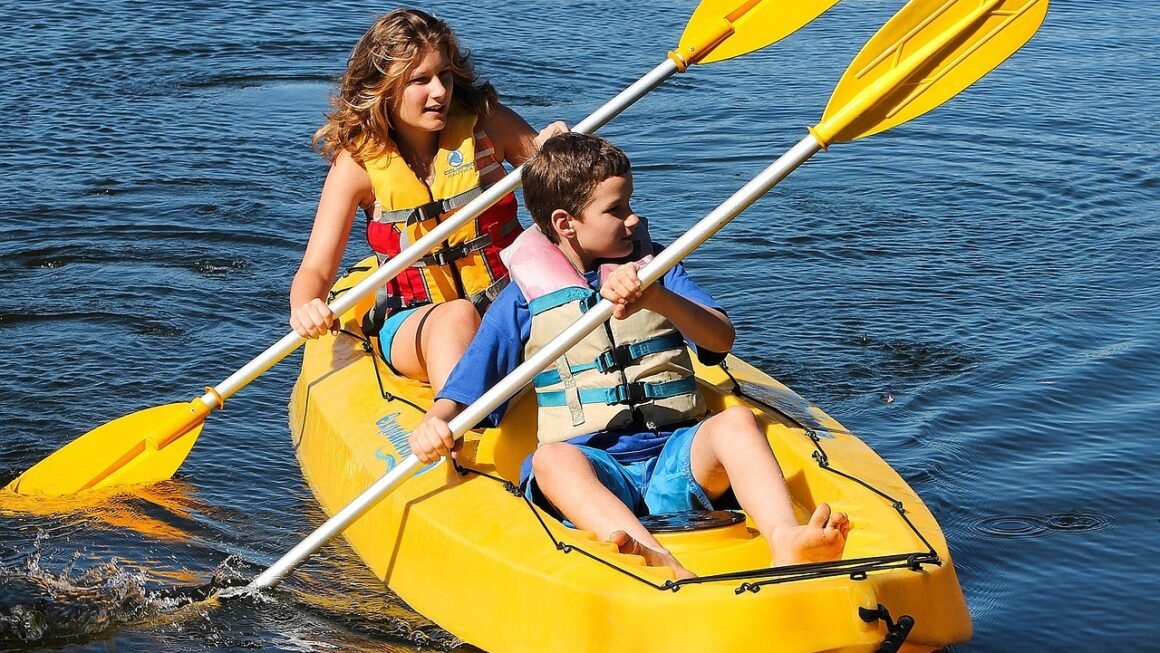Rock climbing: a challenging yet rewarding activity that tests your physical strength, mental agility, and problem-solving skills. Whether you’re a seasoned climber seeking new challenges or a beginner curious about exploring vertical terrain, this guide provides a comprehensive overview of rock climbing, its various styles, essential gear, safety tips, and training advice to help you embark on this exhilarating journey.
Understanding the Basics of Rock Climbing
Rock climbing is more than just scaling a rock face. It’s a blend of physical exertion, strategic planning, and mental focus. Understanding the fundamentals is crucial for a safe and enjoyable climbing experience.
Different Styles of Rock Climbing
Rock climbing encompasses a variety of styles, each presenting unique challenges and requiring different skill sets. Choosing the right style depends on your experience level, preferences, and available resources.
- Bouldering: Climbing on smaller rock formations without ropes, typically close to the ground. Bouldering focuses on powerful, short movements and problem-solving.
Example: A bouldering problem might involve a series of dynamic moves between small crimps (small holds) on an overhanging wall.
- Sport Climbing: Climbing routes that are pre-equipped with bolted anchors. Climbers clip their ropes into these bolts as they ascend, providing protection in case of a fall.
Example: A sport climbing route might have 10-15 bolts over a 30-meter face, allowing for continuous and relatively safe climbing.
- Traditional (Trad) Climbing: Placing your own protection (cams, nuts, etc.) into cracks and fissures in the rock as you climb. Trad climbing requires significant experience in gear placement and risk assessment.
Example: A trad climb could involve placing cams in parallel cracks to protect against a fall, demanding judgment and technical skill.
- Top Roping: Climbing with the rope already anchored at the top of the route. This is the safest and most common way for beginners to start climbing.
Example: Climbing a vertical wall at an indoor climbing gym is often done with top roping, offering a controlled environment for learning basic techniques.
- Aid Climbing: Using artificial aids (ladders, slings, etc.) to ascend when the rock is too difficult or impossible to free climb.
Example: Big wall climbs, like those in Yosemite, often involve aid climbing sections where climbers use specialized gear to make upward progress.
Essential Climbing Gear
Having the right gear is paramount for safety and performance in rock climbing. Investing in quality equipment is a wise decision for any climber.
- Climbing Shoes: Specialized shoes with sticky rubber soles that provide enhanced grip on the rock.
Tip: Beginners should choose comfortable, all-around shoes, while experienced climbers may opt for aggressive, downturned shoes for steep terrain.
- Harness: A safety device worn around the waist and legs to connect the climber to the rope.
Important: Ensure the harness fits snugly and is properly adjusted before each climb.
- Rope: A dynamic rope designed to absorb the impact of a fall.
Detail: Rope length and diameter depend on the type of climbing you plan to do (e.g., longer ropes for multi-pitch climbing).
- Belay Device: A device used to control the rope and arrest a fall while belaying.
Example: A popular belay device is the ATC (Air Traffic Controller), which provides friction to help control the rope.
- Carabiners: Metal clips used to connect various pieces of equipment.
Note: Carabiners come in different shapes and sizes, each suited for specific purposes.
- Quickdraws: Pre-assembled units of two carabiners connected by a sling, used to clip the rope to bolts in sport climbing.
Tip: Carry enough quickdraws for the routes you intend to climb.
- Helmet: Protects the head from falling rocks and impact during falls.
Recommendation: Always wear a helmet, regardless of your experience level.
- Chalk Bag: Keeps your hands dry for better grip.
Detail: Choose a chalk bag that fits comfortably and allows easy access to chalk.
Safety First: Climbing Best Practices
Safety is the top priority in rock climbing. Adhering to established safety protocols minimizes the risk of accidents and ensures a positive climbing experience.
Partner Checks and Communication
Effective communication and thorough partner checks are essential before every climb.
- Pre-climb Checks: A systematic check performed by both the climber and the belayer to ensure all equipment is properly connected and functioning.
Example: Checking the buckle on your harness, ensuring the rope is threaded correctly through the belay device, and verifying the locking carabiner is closed.
- Clear Communication: Using standardized commands to communicate between the climber and belayer.
Standard Commands: “On belay?”, “Belay on.”, “Climbing!”, “Take!”, “Slack!”
- Environmental Awareness: Assessing the surrounding environment for potential hazards like loose rocks or changing weather conditions.
Actionable Takeaway: Pay close attention to weather forecasts and avoid climbing in unstable conditions.
Understanding Fall Dynamics
Understanding how falls occur and how to manage them is crucial for both climbers and belayers.
- Belaying Techniques: Proper belaying techniques are essential for safely arresting a fall.
Example: Using a PBUS (Pull, Brake, Under, Slide) method with an ATC to effectively stop a falling climber.
- Fall Practice: Practicing controlled falls in a safe environment to build confidence and improve reaction time.
Note: Fall practice should always be supervised by an experienced climber.
- Spotting: Providing a physical guide for boulderers to ensure a safe landing.
Detail: Spotters should focus on directing the climber towards the crash pad and protecting their head and neck.
Indoor vs. Outdoor Climbing Safety
While the basic principles of safety apply to both indoor and outdoor climbing, there are some distinct differences.
- Indoor Climbing: Controlled environment with pre-set routes and regularly inspected equipment.
Benefit: Provides a safe and convenient way to learn basic climbing skills.
- Outdoor Climbing: Exposure to natural hazards like weather, loose rock, and variable rock quality.
Important: Requires careful planning, route selection, and awareness of environmental conditions.
Training and Skill Development
Improving your climbing skills requires a combination of physical training, technical practice, and mental conditioning. A well-rounded training program will help you progress safely and efficiently.
Physical Conditioning for Climbing
Climbing engages multiple muscle groups and requires a specific type of strength and endurance.
- Strength Training: Focusing on exercises that build pulling and pushing strength.
Examples: Pull-ups, push-ups, rows, and deadlifts.
- Endurance Training: Improving your ability to sustain effort over long periods.
Examples: Long climbs, circuit training, and cardiovascular exercises.
- Flexibility and Mobility: Stretching and mobility exercises to improve range of motion and prevent injuries.
Examples: Yoga, dynamic stretching, and foam rolling.
Technical Skills and Techniques
Mastering climbing techniques can significantly improve your efficiency and reduce the risk of injury.
- Footwork: Placing your feet precisely and efficiently to conserve energy.
Tip: Focus on “quiet feet” – minimizing noise and movement while placing your feet on holds.
- Body Positioning: Using your body weight and center of gravity to maximize efficiency.
Example: Keeping your hips close to the wall to reduce strain on your arms.
- Route Reading: Analyzing the route ahead and planning your movements.
Important: Identify key holds, rest spots, and potential difficulties before starting the climb.
Mental Game and Strategy
Climbing is as much a mental challenge as it is a physical one.
- Fear Management: Learning to control fear and manage risk effectively.
Example: Taking calculated risks and building confidence through progressive challenges.
- Focus and Concentration: Maintaining focus on the task at hand and avoiding distractions.
Tip: Use visualization techniques and positive self-talk to enhance concentration.
- Problem Solving: Developing the ability to analyze complex sequences of moves and find creative solutions.
Example: Breaking down a difficult problem into smaller, more manageable sections.
Finding Climbing Resources and Community
Connecting with other climbers and accessing reliable resources can significantly enhance your climbing journey.
Climbing Gyms and Outdoor Areas
Locating and utilizing climbing gyms and outdoor areas is essential for practicing and progressing.
- Indoor Climbing Gyms: Offer a controlled environment for training, learning techniques, and socializing with other climbers.
Benefit: Provide access to a variety of routes and bouldering problems, as well as instruction and gear rental.
- Outdoor Climbing Areas: Offer a more challenging and rewarding experience, with opportunities to explore natural landscapes and test your skills in a real-world setting.
Important: Research local climbing areas, obtain permits if necessary, and be aware of environmental regulations.
Joining Climbing Communities
Connecting with other climbers can provide valuable support, encouragement, and knowledge.
- Climbing Clubs: Organized groups that offer climbing trips, training sessions, and social events.
Benefit: Provide a structured and supportive environment for learning and progressing.
- Online Forums and Groups: Online communities where climbers can share information, ask questions, and connect with others.
Example: Websites like Mountain Project and Reddit’s r/climbing offer valuable resources and forums for discussion.
- Local Meetups: Informal gatherings of climbers for training, climbing sessions, and socializing.
Tip: Search for local climbing meetups on websites like Meetup.com.
Learning from Professionals and Courses
Investing in professional instruction can accelerate your learning and improve your safety.
- Climbing Courses and Clinics: Structured programs that teach essential climbing skills and techniques.
Benefit: Provide hands-on instruction from experienced instructors and cover a wide range of topics, from basic belaying to advanced climbing techniques.
- Hiring a Climbing Guide: Personalized instruction from a certified climbing guide.
Important: Ensure the guide is certified and experienced in the type of climbing you are interested in.
- Reading Climbing Books and Articles: Accessing written resources to learn about climbing techniques, safety, and training.
Example: “Training for Climbing” by Eric Hörst is a comprehensive guide to climbing training.
Conclusion
Rock climbing is a multifaceted activity that offers physical, mental, and emotional rewards. By understanding the fundamentals, prioritizing safety, engaging in consistent training, and connecting with the climbing community, you can unlock your potential and enjoy a lifetime of climbing adventures. Start slowly, learn from experienced climbers, and always prioritize safety. Whether you aspire to conquer challenging sport routes, scale towering trad climbs, or simply enjoy the thrill of vertical movement, rock climbing offers a unique and rewarding experience for climbers of all levels.



